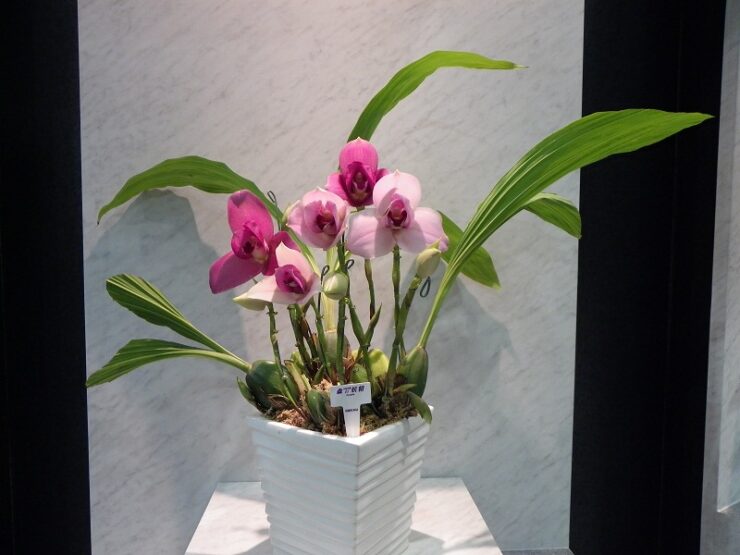In this article, we will explore the captivating allure and importance of the February birth orchid, known as the Lycaste, a flower that has earned a distinguished reputation for its stunning appearance and cultural symbolism.
The Lycaste is a favorite among orchid aficionados due to its graceful yet striking appearance, showcasing petals in a variety of hues, including white, pink, purple, and yellow.
Beyond its aesthetic appeal, this orchid also holds cultural significance in different regions of the world. In some cultures, it is believed to symbolize strength, wisdom, and beauty, while in others, it is viewed as a representation of purity and innocence.
As we delve further into the fascinating world of the February birth orchid, we will discover the various meanings and customs associated with this extraordinary bloom.
History of the Orchid Lycaste
The Lycaste orchid, a beautiful and captivating flower, has a rich history that spans across centuries and continents.
Belonging to the Orchidaceae family, the Lycaste genus consists of over 30 species, primarily found in the tropical regions of Central and South America, with some species extending into the Andean cloud forests.
The Lycaste orchid was first described by John Lindley, a British botanist, in 1843. He named the genus after Lycaste, a character from Greek mythology who was renowned for her beauty.
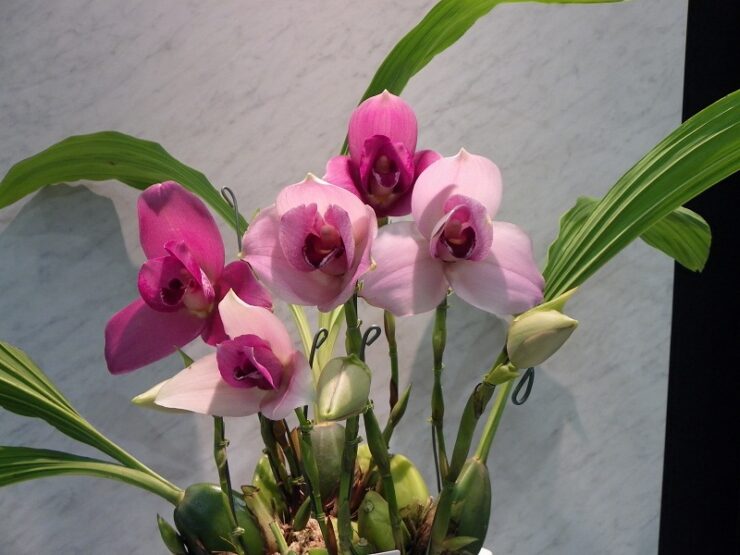
This name was fitting, as the Lycaste orchid is known for its stunning appearance and alluring fragrance.
Throughout history, the Lycaste orchid has been highly sought after by collectors and horticulturists alike, who have appreciated its intricate floral structure and wide range of colors.
Many species of Lycaste orchids have large, waxy flowers with a triangular lip and a distinctive spur.
The color palette varies from species to species, including shades of white, yellow, pink, and various hues of red and green.
Culturally, the Lycaste orchid has held various meanings and symbolic significance. In some societies, it is considered a symbol of love, strength, wisdom, and beauty, while others regard it as a representation of purity and innocence.
Over the years, Lycaste orchids have been featured in artistic and literary works, adding to their mystique and cultural importance.
Today, Lycaste orchids continue to captivate the hearts of flower enthusiasts and are frequently used as ornamental plants. Many hybrids have been developed, further diversifying the Lycaste genus and showcasing the incredible adaptability of these stunning flowers.
As the February birth orchid, the Lycaste holds a special place in the hearts of those born in this month, symbolizing the timeless beauty and enduring allure of this remarkable flower.
Symbolism and Cultural Significance
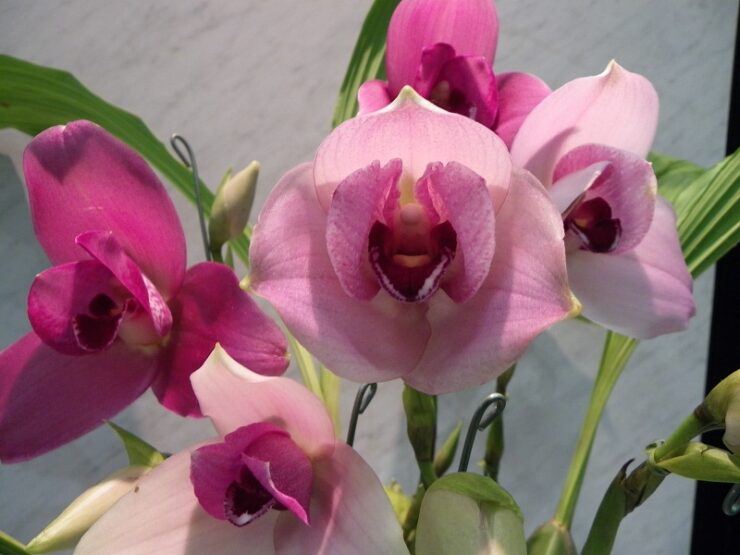
The Lycaste orchid, with its enchanting beauty and diverse range of colors, has held a significant place in various cultures throughout history. Its symbolism and cultural significance can be seen in art, literature, and folklore, as well as in the meanings attributed to this captivating flower.
In many cultures, the Lycaste orchid symbolizes love, strength, wisdom, and beauty. Its delicate yet striking appearance, along with its alluring fragrance, has made it a symbol of passion and romanticism.
The flower has been featured in poetry and art as a representation of deep emotions and the power of love.
In some societies, the Lycaste orchid is seen as a symbol of purity and innocence. The white and pastel-colored varieties, in particular, are often associated with these qualities. The flower’s intricate structure and elegant form also contribute to this perception, making it an ideal choice for weddings and other ceremonies that celebrate purity and new beginnings.
The Lycaste orchid’s connection to strength and wisdom can be traced back to the resilience and adaptability of the plant itself. Capable of thriving in a variety of environments, from tropical rainforests to Andean cloud forests, the Lycaste orchid demonstrates a remarkable ability to overcome challenges and adapt to new surroundings.
This characteristic has led to the association of the Lycaste orchid with inner strength and the wisdom to navigate life’s obstacles.
As the February birth orchid, the Lycaste holds special significance for those born during this month. It serves as a reminder of the qualities that are associated with the flower, such as love, strength, wisdom, and purity.
Gifting a Lycaste orchid to someone born in February can be seen as a thoughtful gesture that acknowledges the unique symbolism and cultural importance of this extraordinary bloom.
Medicinal Purposes
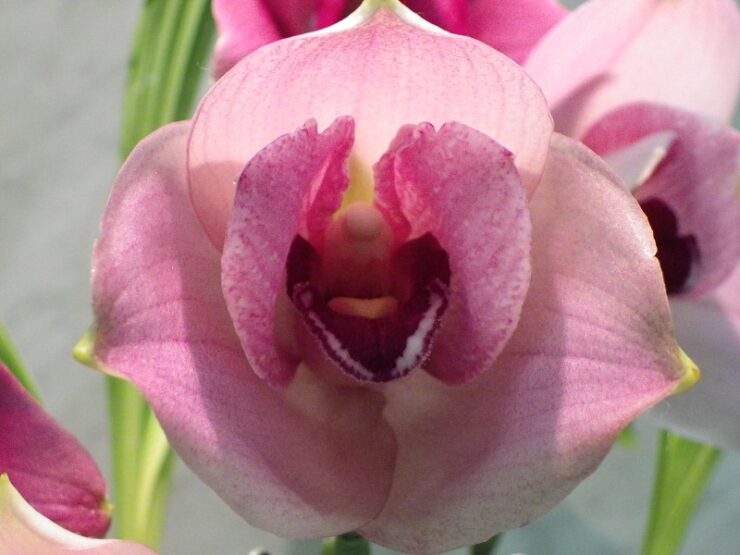
While the Lycaste orchid is best known for its captivating beauty and cultural symbolism, it is also worth noting that various orchid species have been traditionally used for medicinal purposes in different cultures.
Although there is limited research specifically on the Lycaste orchid’s medicinal properties, the broader Orchidaceae family has been utilized in traditional medicine across the world.
In Traditional Chinese Medicine (TCM), for example, orchid plants have been used for centuries to treat a variety of ailments. Some species are believed to possess anti-inflammatory, antioxidant, and immune-boosting properties. Orchids have been used in TCM remedies to treat coughs, asthma, gastrointestinal issues, and even neurological disorders.
In Ayurveda, the traditional medicine system of India, orchids have been used as well. Some species are believed to help with digestive issues, skin ailments, and wound healing. They are also thought to possess aphrodisiac qualities, boosting vitality and promoting overall well-being.
In Central and South American traditional medicine, where Lycaste orchids are native, local communities have used various orchid species for their purported healing properties.
Some orchids have been employed to treat inflammation, pain, and infections, while others have been used as a general tonic to improve overall health.
Although there is limited scientific research specifically on the Lycaste orchid’s medicinal properties, it is essential to acknowledge the rich tradition of using orchids as a whole in various healing practices. It is crucial to approach any use of orchids for medicinal purposes with caution, as their efficacy and safety have not been widely studied in controlled clinical trials.
Always consult with a healthcare professional before using any plant-based remedies, including those derived from orchids.
Fun Facts
- A Name of Mythical Origin: The Lycaste orchid was named after a character from Greek mythology. Lycaste was a beautiful and virtuous woman who caught the attention of Apollo, the god of light, music, and poetry. This name perfectly captures the captivating beauty and alluring charm of this enchanting flower.
- A Flower of Many Faces: With over 30 species in the Lycaste genus, these orchids come in an impressive array of colors and forms. From delicate pastel shades to vibrant hues of pink, yellow, red, and green, there’s a Lycaste orchid to suit every taste and preference.
- High Altitude Dwellers: Many Lycaste orchid species can be found in the Andean cloud forests, which are unique ecosystems that exist at high elevations. These misty and enchanting environments provide the perfect conditions for the Lycaste orchid to thrive, further adding to its mysterious allure.
- A Royal Connection: Lycaste orchids have a historical connection to royalty, as Queen Victoria of England was known to be an orchid enthusiast. She had a vast collection of orchids at her residences, and it’s quite possible that the regal Lycaste orchid was among her favorites.
- A Horticulturist’s Dream: Lycaste orchids are not only admired for their beauty but also for their adaptability. This has made them a popular choice among horticulturists and orchid breeders, who have developed numerous hybrids, further expanding the diversity and appeal of this remarkable genus.
- Long-Lasting Blooms: One of the reasons Lycaste orchids are so adored is their long-lasting flowers. Depending on the species, Lycaste blooms can last anywhere from a few weeks to several months, providing a seemingly endless display of beauty and charm.
- Sweetly Scented: Many Lycaste orchids are known for their delightful fragrances, which can range from sweet and fruity to spicy and exotic. This captivating quality adds yet another layer of appeal to these already enchanting flowers.
Care Lycaste
Caring for Lycaste orchids may seem like a daunting task, but with the right knowledge and a bit of attention, these captivating flowers can flourish in your home or garden. Here are some essential care tips to help your Lycaste orchid thrive:
Light:
Lycaste orchids generally prefer bright, indirect light. Avoid exposing them to direct sunlight, as it can scorch their leaves. A spot near an east or west-facing window that receives dappled light is ideal.
If you’re using artificial light, provide 12-14 hours of light per day.
Temperature:
These orchids typically enjoy intermediate temperatures. During the day, aim for 65-75°F (18-24°C), while nighttime temperatures should be between 55-60°F (13-16°C).
Some species can tolerate cooler or warmer temperatures, so be sure to research the specific needs of your Lycaste orchid.
Humidity:
Lycaste orchids thrive in a humid environment, with a relative humidity of around 50-70%. To maintain proper humidity, you can use a humidity tray, a humidifier, or simply mist the plant regularly.
Ensure proper air circulation to prevent fungal infections and other diseases.
Watering:
It’s essential to strike the right balance when watering Lycaste orchids. They prefer evenly moist growing conditions during their active growth phase, but they should never be left sitting in water. Water your Lycaste orchid when the potting mix begins to dry out, ensuring that the mix drains well. Reduce watering frequency during the plant’s dormant period.
Potting Mix and Repotting:
Lycaste orchids prefer a well-draining, airy potting mix. A blend of bark, perlite, and sphagnum moss works well. Repot your Lycaste orchid every 1-2 years or when the potting mix begins to break down.
Choose a pot with drainage holes and only go up one pot size to prevent overwatering issues.
Fertilization:
Feed your Lycaste orchid with a balanced orchid fertilizer diluted to half strength every 2-4 weeks during the active growth phase. Reduce feeding to once a month during the plant’s dormant period.
Pruning and Maintenance:
Remove spent blooms and yellowing leaves to maintain your Lycaste orchid’s health and appearance. Regularly check for pests and diseases, and address any issues promptly.
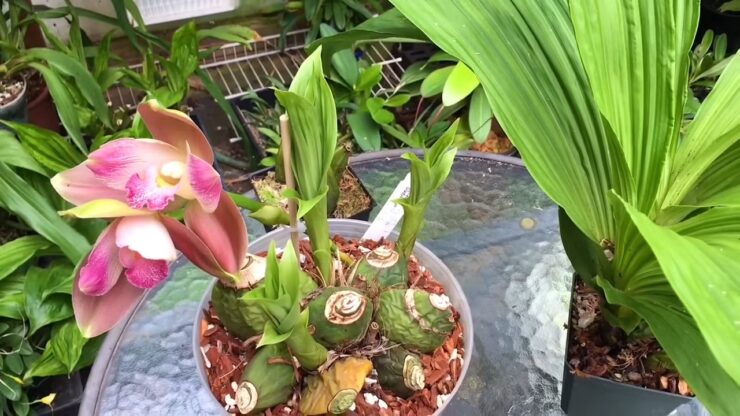
FAQ
How do I know when my Lycaste orchid is in its dormant period?
Lycaste orchids typically enter a dormant period when they have finished blooming, and their growth slows down. This period usually occurs during the winter months. You might notice a decrease in new leaves and roots, and the pseudobulbs may appear to be resting.
During this time, you should reduce watering and fertilization, as the plant requires less energy for growth.
How can I encourage my Lycaste orchid to bloom again?
To encourage your Lycaste orchid to rebloom, provide the appropriate light, temperature, and humidity conditions, as well as a well-draining potting mix. Ensure that you are fertilizing regularly during the active growth phase and reduce watering and feeding during dormancy.
Additionally, maintain a temperature difference between day and night, as this can stimulate blooming in some species.
How do I know if my Lycaste orchid has a pest or disease problem?
Common signs of pests and diseases in Lycaste orchids include yellowing or wilting leaves, black or brown spots, and a general decline in the plant’s health. Pests such as spider mites, aphids, and mealybugs can cause damage to leaves, roots, and flowers.
Fungal and bacterial infections can lead to rot and other issues. If you suspect a problem, inspect your plant carefully and consult a local orchid expert or horticulturist for advice on treatment options.
Can I grow Lycaste orchids outdoors?
While Lycaste orchids are primarily grown as indoor plants, they can be grown outdoors in regions with suitable climates. If you live in an area with mild temperatures, moderate humidity, and indirect sunlight, you may be able to grow Lycaste orchids outdoors.
However, be prepared to move the plants inside during extreme weather conditions or temperature fluctuations.
Are Lycaste orchids toxic to pets?
While the majority of orchids are considered non-toxic to pets, it is always best to err on the side of caution. Keep your Lycaste orchids out of reach of pets, especially curious cats and dogs that may be tempted to chew on the leaves or flowers.
Conclusion
The Lycaste orchid, with its enchanting beauty, diverse colors, and cultural significance, is truly a captivating flower that holds a special place in the hearts of those born in February. By understanding the history, symbolism, and care requirements of this remarkable bloom, you can appreciate its allure even more. Whether you’re a seasoned orchid enthusiast or a newcomer to the world of these stunning flowers, the Lycaste orchid is sure to enchant and inspire you with its timeless charm and elegance.
If you like this article read more here about November and September birth orchids.
